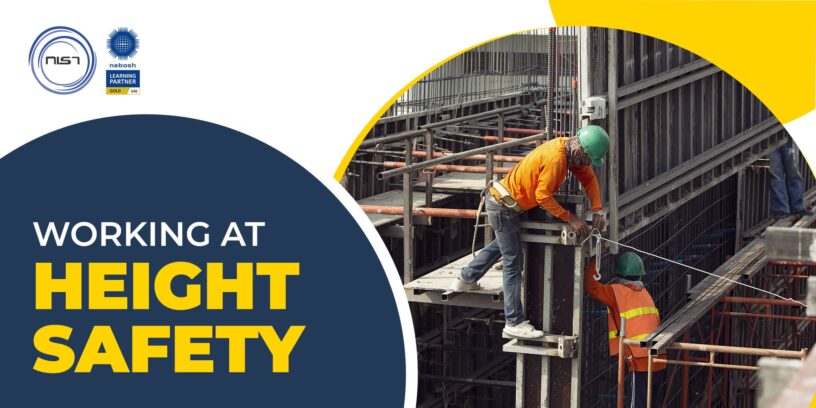Heights are a major factor in the workplace falls, and many people who fall from heights suffer serious injury or even death. People who work on scaffolds have high rates of injury compared with other construction workers, and those involved in demolition or construction often sustain multiple injuries when accidents happen.
In addition, people working at height may not always be aware of their own risks. The current standard for work at height requires a fall prevention system and harnesses on all sites that are subject to work at height regulations, and those who use this type of construction have to comply with the regulations, which may mean having a specialist fall protection engineer on site before commencing work to assess your needs and advise you as to what is required for you to safely carry out the work at height within the regulations.
The majority of falls or accidents occur when individuals are working on or using ladders, scaffolds, or other types of elevated equipment.
Falls account for about 33.5% of construction worker deaths. One such type of accident that occurs due to working at height is a slip from a ladder or scaffolding, where workers are left exposed to falling from the work-site when they get off the ladders or platforms due to their movement during work activities or due to defective ladders or scaffolding leading to falls from heights.
Why do accidents continue to happen?
As industries increase, there has been an increase in the number of people involved in occupational accidents over the last few years on average. The majority of occupational injuries and illnesses are preventable with proper training and equipment for work crews involved in tasks that require them to be on ladders, high places, or working from heights.
However, most employers do not implement these procedures effectively due to cost, lack of time, and a reluctance to use safety measures and appropriate personal protective equipment (PPE) on site when employees are actually performing their duties in a safe manner. This is an example of reluctance to use safety measures on site when employees are performing tasks.
Preventive measures:
Occupational injuries can be prevented by taking precautionary measures such as
- Having safe working practices in place on the job site
- Wearing personal protective equipment (PPE), Harnesses
- Learning about and using the types of fall protection equipment required for different jobs in the Construction industry
- Identification of hazards on a job site
- Learning on Falls from great heights–potential causes
- Learning on Falls from great heights–methods of prevention
- Fall risk assessment tool
- Worker involvement in reducing fall risk
- Knowing when and how to report an injury,
- Knowledge and understanding of occupational safety and health regulations,
were the different preventive measures taken to reduce ‘work at height’ accidents. Training provided by a professional is the best way to be prepared when it comes to working at heights. Safety equipment is essential during this activity, and all employees should have an awareness of it to avoid injuries while performing their tasks safely and effectively.
Causes of falls:
In general, falls include many reasons that may occur during working hours, like ladders and scaffolds, falling objects or equipment, falls into confined spaces, Ceiling falls. Also, the most common causes of all injuries are slipping on wet floors, tripping and hitting an object while walking, or being struck by a moving object (like a motor vehicle).
Benefits of ‘Work at height’ training:
A training on ‘Work at height’, will help learners to understand their role and responsibilities as an employer, constructor (if applicable), supplier, supervisor and worker, with respect to working safely at heights. Most importantly, this training will aid in the understanding of principles of working at heights such as,
- Hierarchy of controls (such as elimination, isolation, engineering, substitution, administrative, or PPE)
- Principles of work on ladders and scaffolds
- Principles of work on temporary platforms/gantries
- Working in Confined Spaces Principles
- Types of protection for working at heights
- Protection from falling, including harnesses and lifelines
- Use of fall arrest systems
- The use of safety nets and other rescue equipment at heights
- The use of portable fire extinguishers
- First aid kits, fire shelters, and first aid kits, on a ladder or scaffold
- The use of tools and equipment for working at heights safely.
- Personal protective equipment and its use
On practicing the mentioned things above, in practice, learners will be familiar with:
- Safe Work Practices
- The role of employers in maintaining a safe workplace
- Types of work that may be hazardous; proper construction site procedures
- Risk assessment for the task being performed
- Personal protective equipment (PPE) required for each job type
- Common Injury Prevention Techniques
- Safe work habits.
Why NIST:
NIST is an ISO: 9001:2015 certified company and India’s first NEBOSH Gold Learning Partner. We have over 15 years’ experience in providing training for individuals, companies, organizations, industries, private businesses, etc. Our classes are designed for anyone working in any type of industry, including construction, manufacturing, food processing, mining, and many more…
We offer a variety of training courses, including Industrial Safety, Hazardous Waste Management Training, Fire & Rescue, Hazmat Training, Work at Height Course, Medical First Aid Training, PPE Training (Personal Protective Equipment), Emergency Response Training, and much more! Our experienced instructors will guide you through the course content and assist you every step of the way during your program and help you get certified upon successful completion of the training program!
For more information, please contact our client service team at +91 9384663536 or send an email to corporate.sales@nistinstitute.com.














Leave a Reply